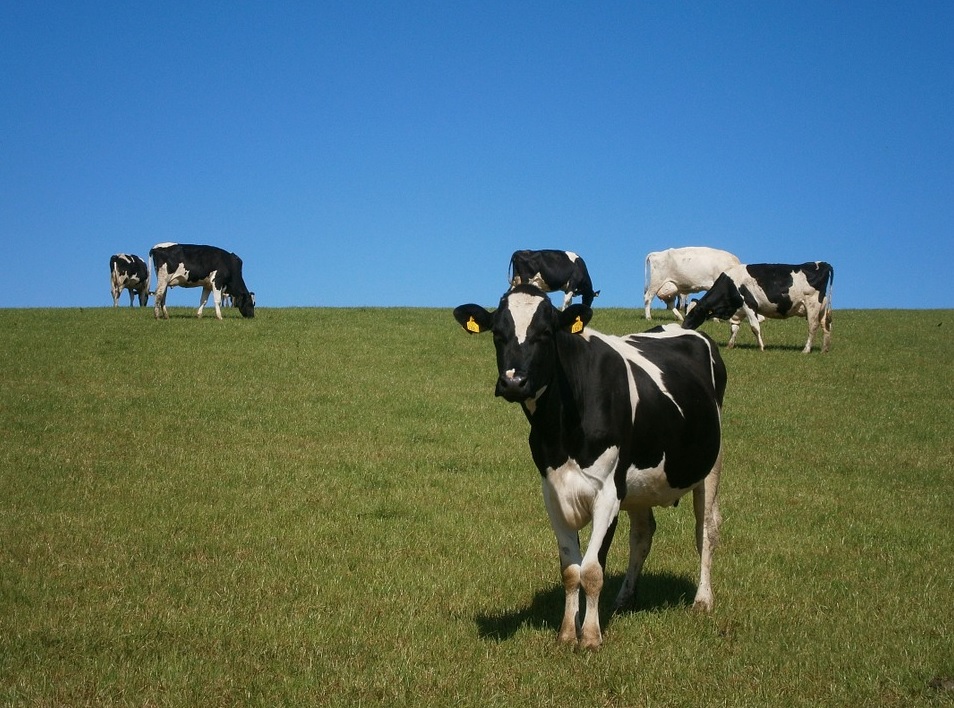
By Ching Lee
California Farm Bureau
With milk prices reaching record-high levels this year, dairy farmers should be feeling optimistic about the business. But impacts from the ongoing drought and soaring production costs are crimping profit margins and dampening spirits as they navigate a volatile market landscape.
Many remember too well the crisis of 2008-2009, when plunging milk prices coupled with elevated feed costs led to unprecedented loss of producer equity and dairies closing their doors. With fears of another recession looming, dairy farmers are biting their nails about the sustainability of current market conditions.
Already, a growing number of market reports indicate higher milk prices have begun to zap demand, with sales of milk and dairy products slipping.
“I’ll be honest, being in operation is scary,” said Merced County dairy farmer David Barroso, “just knowing what input costs are as far as feed, as far as fuel and anything else, if milk prices decide to fall.”
In its June report, Rabobank said it expects milk prices have peaked and will begin to retreat through the rest of the year and into 2023.
“However, the decline in prices will be modest,” the bank said.
Several factors have led to the record-setting milk prices. Perhaps the biggest is the decline in national milk production, which has led to tighter supplies. With rising feed costs, dairies are milking fewer cows. A stronger cattle market has also incentivized dairies to raise more bulls for beef rather than dairy replacement heifers, lowering U.S. cow numbers, Kings County dairy farmer Joaquin Contente said.
In California, water restrictions due to the multi-year drought have shortened the supply of feed available to dairies. Contente, who grows most of his own forage crops, said he will need to leave some of his land fallow. He did not plant about 40 acres last year due to water shortages. That means he has much less feed in reserve.
With water cutbacks constraining the amount of feed dairy farmers can grow, they must now buy more feed, Tulare County dairy farmer Joey Airoso said. He has had to idle about 18% of his acres this summer due to lack of water.
In his region, water shortages have put “a lot of pressure on everybody in dairy, especially the counties in the south,” which have zero surface-water allocation, he said. Groundwater regulations have also limited how much water farmers there can pump.
“A lot of people in our area…have ground that you can’t farm, because there’s not enough water to farm it,” Airoso said. “When people can’t farm all the ground, it creates more of a demand for the feed that’s grown locally, such as corn silage, alfalfa.”
He said even though the current milk price is covering his increased costs, that may not be the case for all dairies, particularly those that must buy all or most of their feed.
“All things considered, the margins would be positive,” he said. “When you overlay the water situation over the top, it becomes negative.”
Contente said even though he has maintained his cow numbers, milk production has dipped because of the recent heat wave. Heat stress also hampers the reproductive performance of cows, which affects a dairy’s profitability and production, he added.
“Combination of a lot of factors are putting a lot of pressure on the industry, even though we have these beautiful, beautiful (milk) prices,” Contente said.
Barroso in Merced County also has not changed his cow numbers. Operating what he described as “a smaller dairy that’s been around for 40-plus years,” Barroso said his family has “absolutely” considered leaving the business and the state.
But for now, they’ve decided to invest in new technologies and installations to modernize the dairy, which he said had “fallen a little bit behind.” Along with rising milk prices, the improved efficiencies and management changes he’s made, he said, have allowed the dairy to be more profitable this year.
The surging cost of water and fertilizer needed to grow forage crops such as alfalfa hay and corn silage remains a challenge, Barroso said. Other feeds such as grain corn, soybean meal and almond hulls must be purchased. Most feed-price increases have grown by double digits for buyers in the western U.S., according to Rabobank.
Barroso said delivery of feed commodities such as corn, which come by rail, has “been a disaster.” He noted there were four or five days last month in which he had to do without corn due to unexpected rail-service disruptions. He was forced to adjust his rations to feed more forage, which negatively affected milk production. The heat has dropped production by another 8%, he added.
Airoso said he, too, has maintained his milking-herd size because “it’s really hard to get smaller when you have inflation.” With all his costs going up, he said, shrinking cow numbers would create less income for the farm.
“The cost of doing business keeps rising,” he said. “The cost of technology keeps rising. If you want to be futuristic and be thinking ahead, you’ve got to be able to afford that kind of stuff.”
(Ching Lee is an assistant editor of Ag Alert. She may be contacted at [email protected].)
Permission for use is granted, however, credit must be made to the California Farm Bureau Federation when reprinting this item.
Disclaimer: Articles featured on Oregon Report are the creation, responsibility and opinion of the authoring individual or organization which is featured at the top of every article.

